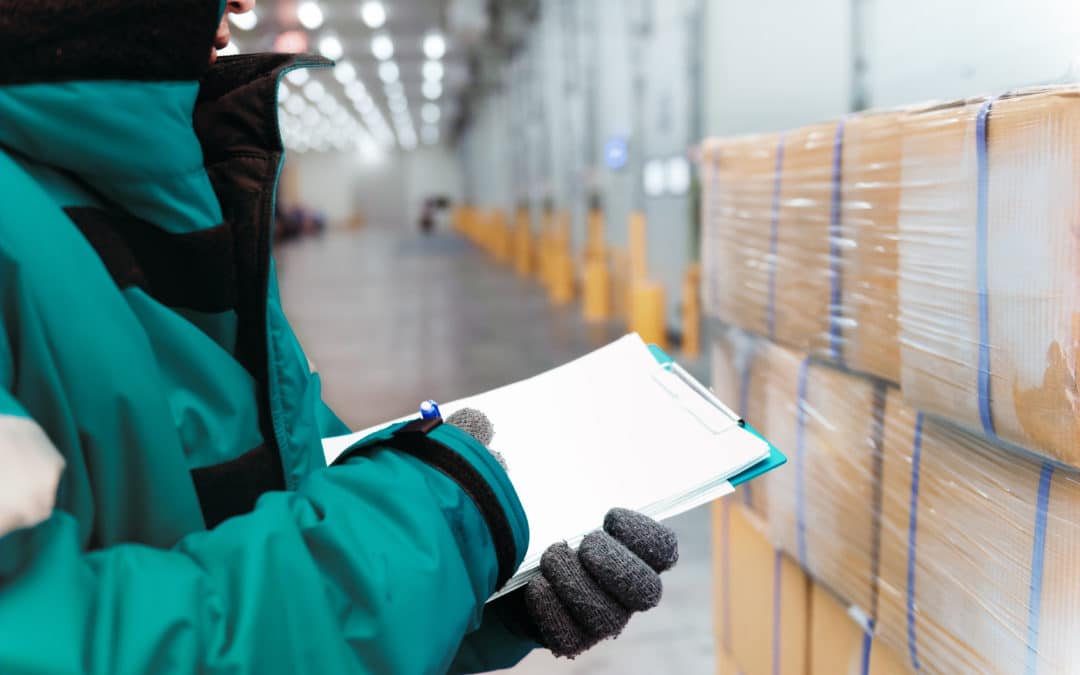Think fire hazards shouldn’t be an issue in a cold storage environment? Think again. These facilities still require proper, even specialized, fire protection systems. Let’s discuss more about cold storage and what type of sprinkler system is recommended to best protect them from fire hazards.
What Is Cold Storage?
Items like perishable goods, temperature-controlled vaccines, and more must be adequately protected to ensure the safety of those who consume them. That’s where cold storage facilities come in. These facilities are capable of storing products that can’t survive in normal storage conditions, at a temperature within the range of -40°F to 65°F.
From a broad perspective, the only difference between regular warehouses and cold storage facilities is that cold storage facilities are, well, cold. But if you take a closer look, there are many factors that work to create that cool environment — many of which pose risks for fires.
Understanding The Need for Fire Protection in Cold Storage
Believe it or not, cold storage facilities aren’t naturally fireproof. In fact, hundreds of them suffer some type of damage every year due to fires — just take a look at some of these fire-related incidents in cold storage facilities published by the National Fire Protection Association (NFPA). Many of them resulted in losing precious lives and millions of dollars in damages.
But how is it possible for such cold environments to end up consumed in flames?
Fire Hazards in Cold Storage
The truth is, cold storage facilities still have various fire hazards. They also present some unique challenges when it comes to fire detection and protection systems. Here are a few of the most common:
- Stored products — The stored goods themselves are often packed in highly flammable cardboard boxes or polystyrene trays, which are then stored on larger cardboard pallets.
- Building materials — In an effort to maintain cold temperatures, cold storage facilities often have high amounts of highly flammable insulation within their walls and ceilings.
- Electrical systems — Cold storage facilities require extensive electrical systems to keep cooling equipment running. When overworked, these systems pose fire risks.
- Refrigerants — In most cases, anhydrous ammonia is the refrigerant of choice for cold storage facilities. As a flammable gas, this presents a high risk for fires and explosions.
- High airflow — While it does a great job keeping spaces cool and products safe, high airflow also creates a fire risk by introducing more oxygen, diluting smoke, and making fires difficult to detect.
How to Prevent Fire Hazards in Cold Storage Facilities
Now that we’ve discussed the fire hazards in cold storage facilities, let’s talk about what steps you can take to protect against them.
Our first word of advice is to become familiar with NFPA 13. The 2019 edition includes updates that address a range of fire sprinkler design and installation standards — including some regarding best practices for cold storage.
From there, it’s important to do two more things: 1) invest in the right fire sprinkler system for cold storage, and 2) invest in the right fire detection system for cold storage.
What Type of Fire Sprinkler System Is Recommended for Your Cold Storage Facility?
There are a few different options when it comes to fire sprinkler systems for cold storage facilities. The one that’s recommended for you ultimately depends on your facility’s specifications.
If you have a “big box” facility (one that’s completely conditioned and insulated), it’s recommended that you invest in a dry or pre-action fire sprinkler system to protect it. Think about it — water-based sprinklers and below-freezing temperatures just don’t go hand in hand.
However, if you have a “box-in-box” facility (a cold space that’s housed within a larger, regularly heated warehouse), then you need a bit more advanced approach. It’s recommended that you install a dry or pre-action fire sprinkler system in the cold space, and a water-based fire sprinkler system throughout the rest of the facility. This mix of two types of fire sprinkler systems ensures the best protection for both types of spaces.
What Type of Fire Detection System Is Recommended for Your Cold Storage Facility?
As for fire detection systems, it’s important to invest in a specialized system that can detect smoke and other fire-related indicators even in harsh environments. Some of the traditional fire detectors and systems just won’t cut it in such cool temperatures.
For this, we recommend VESDA Smoke Detectors by Xtralis. These detectors offer enhanced smoke detection and early warnings of any fire-related issues — even in cold temperatures! They sample the air from a protected area within your pipe network, then transfer that sample to an externally located smoke detector for more accurate analysis. These detectors are well-worth the investment, as they provide much more reliable responses than traditional detection systems can in the cold.
Cold storage facilities are at an unusual risk for fire hazards. While the environment may be cold, the abundance of large machinery drawing on its electrical system can still pose a number of fire-related threats. That’s why it’s important to invest in the fire protection system that will keep your property, products, and people safe. Get in touch with the experts at Vanguard Fire & Security Systems to learn more.


